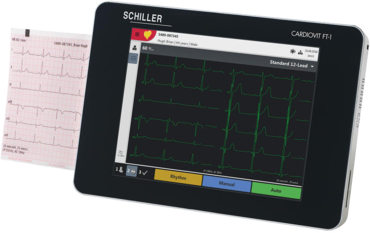ECG Recorders
ECG recorders
From the standard tabletop to the most advanced touchscreen models, Quipment can provide and design the perfect electrocardiograph for your clinical trial(s).
Description
Electrocardiograph devices can record and produce an electrocardiogram (ECG), showing the electrical activity of the heart (using electrodes placed on the patient’s skin).
ECG recorders integrate interpretation algorithms for automatic analysis and measurements of parameters such as PR, QT, corrected QT (QTc) intervals, PR axis, QRS axis, rhythm, etc.
ECG recordings can be directly printed and/or transmitted via Ethernet (LAN/Wi-Fi), Phone line, USB, etc.
Devices are ready to use upon arrival at the investigator site.
Tips
Help us find the right product for your needs!
Important points to consider before choosing an ECG recorder are:
– the number of leads (conventional 12-leads ECG, 5-leads or 3-leads)
– do you need the ECG recordings to be transmitted or simply printed?
– portable or desktop/tabletop type
– any specific configuration (number of ECG copies, parameters/measurement to display, etc.)
Faqs
– What is the difference between a conventional ECG recorder and an ECG Holter?
Conventional ECG machines are mainly used for performing a “short” recording (usually 10 seconds) while ECG Holters are used for continuous recording and monitoring of the patient’s heart activity (24 / 48 / 72 hours or even >7 days), in order to detect any cardiac disorder.
Project
Set-up
Tell us more about the needs of your project and we'll design a custom solution for you.
know more